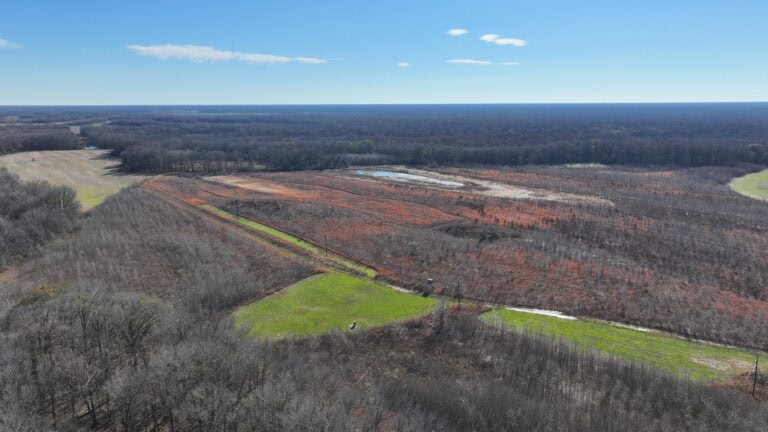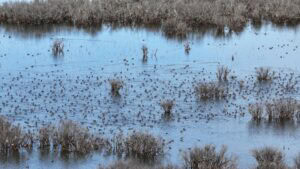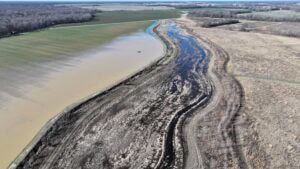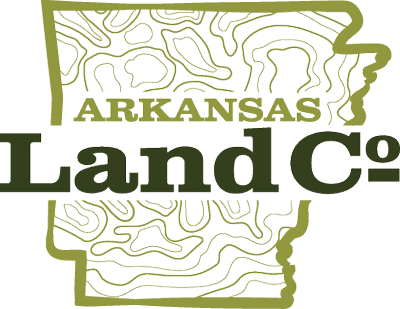
Inevitably the first phone call or first in-person visit with a landowner involves a discussion on “what’s my property worth.” While we can’t legally give an exact value for a property, as that’s an appraiser’s job, it is our job to know the market and be able to speak professionally about market value. Unfortunately, many landowners don’t think about the things they can do to maintain or increase the marketability and market value of their property while they own it. And whether you plan to sell in the near future or not, it only makes sense to plan for the worst (you’re forced to sell for some reason) and hope for the best (you never sell, but could fetch a premium if you wanted).
We are very blessed in our chosen careers to see the best and worst properties across the state of Arkansas. It can truly be amazing at how much different two similar properties can look while under ownership of different individuals or entities. There are many people who take the time, effort, and money to put in food plots, mow their roads, maintain blinds, etc while others do nothing. And of course there are certainly cases where physical or financial abilities limit the work that takes place regardless of an owner’s imagination, intentions, or goals. At other times folks are too busy or simply don’t see or understand that their tract is getting out of hand.
While there isn’t much an individual can do about the neighbors along the road on the drive in, there are several different approaches one can take to maximize a property’s marketability once inside the gate. The very first thing we notice when we go into a property, whether recreational, row crop farmland, or a cattle farm is what it looks like at the entrance. Many of the properties we work on are well manicured, clean, and look sharp. On other hand, some are simply cluttered with junk laying everywhere right when you go in. This can make it difficult because these areas provide the first and last impression a buyer has of the tract. And although it may seem obvious to keep a place clean, we see some pretty bad messes from time to time. Often landowners in these cases say they’ll clean the place up between an accepted contract and close. While that may not sound like a bad idea on the surface and they likely will do what they say, it makes even getting a contract far more difficult than it should be.
The second point is to keep your roads and areas around cabins and barns mowed and clean. Keeping cabin and barn sites clean is crucial to help reduce the likelihood of seeing snakes or a buyer being covered in ticks and chiggers, particularly a wife and/or child. As far as the roads are concerned, most of today’s buyers want, and in many cases expect, the full tour to be in the air conditioning/heat. We can always accommodate so long as roads are passable and in good condition. In one instance, we had a buyer that insisted on bringing his own side by side to the property tour, but ended up busting the roof because the roads were so poorly maintained. While it ended up not being a big issue, it certainly didn’t help anything. Keep in mind roads can serve more than one purpose. A good way to make dual use of your roads is to make them into foods plots as I’ll discuss next.
Food plot maintenance on recreational tracts is a must when it comes to selling a property and expecting to get a strong price for the ground. Maintaining your one or two honey hole food plots on row crop and cattle farms adds a dual use (both income AND recreation) and therefore marketability to a buyer. Just like roads being impassable, it really hurts a showing when you have to try and describe why food plots and/or moist-soil units are not planted. Always put in the best plots you can afford, BUT remember that economical options like wheat create nice green plots which are what buyers are looking to see plus the deer will cover it up too. In the springtime you can put in legumes for deer, chufa for turkeys, or even sunflowers for fall doves. Any of these options keep the plots looking attractive not only to wildlife, but buyers as well. Planting roads and/or road edges, as previously mentioned, provides a positive experience for buyers from start to finish. This also indicates you take great care of the farm and the wildlife on it.
Often tied directly to food plots are box blinds, ladder stands, ground blinds, or other stand types. It’s very important to keep stands looking like they’re in use or at least not crooked and falling over. Often times we’ll see cases where one stand has become unusable and landowners just stick another one 15 feet away without taking down the old one. While the deer may not care, buyers just see that as a chore they have to do right at the start. The same goes for duck hunting blinds too. If a blind is really dilapidated either make repairs so that it’s useable or tear it down and replace with a new one.
Similar to food plot maintenance is keeping up the productive areas on row crop and cattle farms. I’ve had some cases where the landowner has stopped farming the property and let it grow up. This makes our job extremely difficult because instead of selling a farm we’re really trying to sell a weed patch that was a farm. Instead of focusing on the income that exists, we have to try and walk the buyer through what the income can or should be when farmed correctly. Sometimes this is due to an absentee landowner having a bad experience with a particular farmer so they give up on the idea which is the worst option. If you’re not near your farm to watch over it, work to find locals to visit with about finding a trustworthy farmer so you can avoid this unnecessary complication. A good place to start is your local co-op, chemical company, or feed store in cattle country. They deal with farmers every day and will in almost every case tell you who to stay away from and steer you to the best contacts.
Whether its overgrown food plots, cluttered cabins or homes, farm fields full of weeds, or pastures full of trees and briars you create doubt about the purchase in a buyers mind. At a minimum that causes them to question the list price, and in the worst causes them to move on to the next listing without making an offer on yours. It can be amazing to see the difference in excitement levels of the same client on two properties where one is maintained and the other looks untouched. Always remember that maintenance drastically increases not only your chance of selling, but the chance for selling at the highest price possible.



Sign in to save properties, save searches, and set up notification alerts.

Sign up to save properties, save searches, and setup notification alerts.